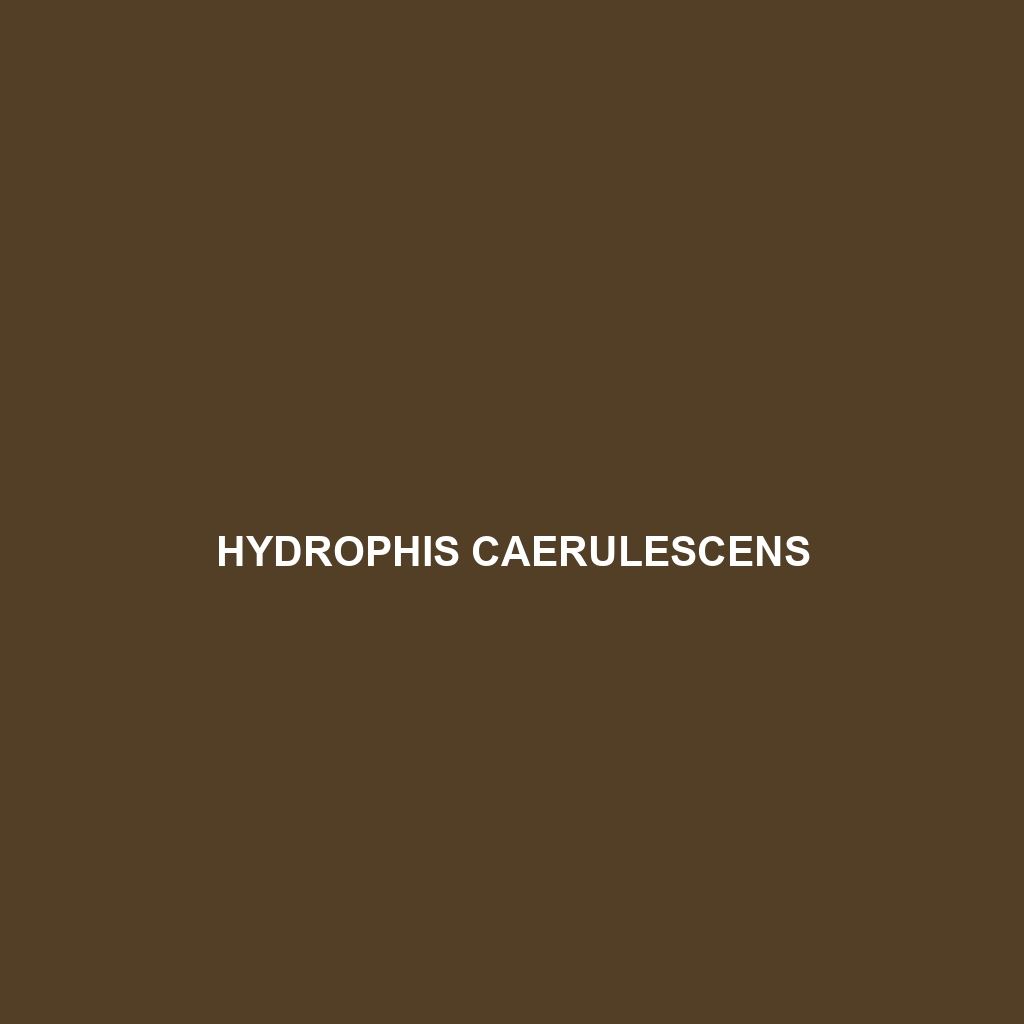Common Name
Hydrophis caerulescens
Scientific Name
Hydrophis caerulescens
Habitat
Hydrophis caerulescens, commonly known as the blue-banded sea snake, is primarily found in marine habitats across the tropical and subtropical waters of the Indo-Pacific region. This snake thrives in shallow coastal waters, estuaries, and reefs where it can find abundant prey. These habitats include coral reefs and sandy bottoms rich in marine life. The climate in these regions is characterized by warm to hot temperatures year-round, with high humidity typical of tropical environments. Geographically, the blue-banded sea snake is often spotted in countries such as Australia, Thailand, and various Pacific Island nations. The environmental conditions of these regions support a diverse ecosystem, essential for its survival.
Physical Characteristics
Hydrophis caerulescens is easily recognizable due to its striking appearance. This species typically reaches lengths of 1.5 to 2.5 meters (5 to 8 feet) with a slender and elongated body. The most notable feature is its distinct coloration; the snake has a greenish-grey body adorned with beautiful blue bands that run horizontally across its back. This coloration is not only aesthetically pleasing but also serves as camouflage against the sandy and rocky ocean floors. The blue-banded sea snake has flat, paddle-like tails aiding in its swimming efficiency. Its small head and large, round, and venomous fangs are well-adapted for a marine lifestyle, enabling it to hunt effectively in its habitat.
Behavior
The behavior of Hydrophis caerulescens is fascinating, particularly in its active foraging and mating rituals. This species is primarily diurnal, preferring to hunt for food during the day. It exhibits a unique swimming style, often moving in a serpentine fashion, which allows it to navigate effortlessly through the water. During mating seasons, males engage in elaborate courtship displays that include intertwining bodies and synchronized swimming. Socially, blue-banded sea snakes are relatively solitary, coming together only during breeding times. These snakes can hold their breath for extended periods, enabling them to dive and hunt for prey on the ocean floor.
Diet
Hydrophis caerulescens is primarily a carnivore, feeding mainly on fish and eels found in its marine habitat. Its diet also includes various mollusks and crustaceans, making it a versatile hunter in the underwater ecosystem. Blue-banded sea snakes possess specialized venom that helps immobilize prey quickly, allowing them to consume their catch effectively. They are known to exhibit ambush behavior, waiting stealthily for unsuspecting prey to pass by before striking. This efficient feeding strategy enhances their survival and nutrient intake essential for their development.
Reproduction
The reproductive cycle of Hydrophis caerulescens is intriguing, characterized by viviparity, where the female gives birth to live young rather than laying eggs. Mating typically occurs in the warmer months, with gestation periods lasting about 7 to 10 months. A female can give birth to approximately 5 to 15 neonates at a time. The young are fully formed and measure around 30 centimeters (about 1 foot) at birth, equipped to swim and hunt independently almost immediately. Parental care is minimal, with no involvement from the mother once the offspring are born.
Conservation Status
As of the current assessment, Hydrophis caerulescens is classified as a species of least concern according to the International Union for Conservation of Nature (IUCN). However, habitat loss, pollution, and climate change impact its population stability. Conservation efforts focus primarily on preserving marine ecosystems and addressing threats such as overfishing and habitat degradation. Ensuring the health of coral reefs and coastal environments is crucial for maintaining the populations of blue-banded sea snakes.
Interesting Facts
Hydrophis caerulescens is not only visually stunning but also possesses unique adaptations. Its venom is specifically adapted for aquatic hunting, being potent enough to subdue larger prey yet not harmful to humans unless provoked. Additionally, these snakes are proficient divers, capable of reaching depths of over 100 meters (328 feet) in search of food. Another fascinating aspect of their biology includes their remarkable ability to produce oxygen-binding proteins, which optimize their respiration underwater.
Role in Ecosystem
The ecological role of Hydrophis caerulescens is crucial in maintaining the balance within its marine environment. As a predator, it helps regulate fish populations, ensuring the health of coral reefs and overall biodiversity. In turn, this balance supports various marine species and contributes to the resilience of ocean ecosystems. The blue-banded sea snake also serves as a prey item for larger predators such as birds and larger fish, integrating it within the wider food web. Its presence indicates a healthy marine ecosystem, thereby playing a vital role as an indicator species.
